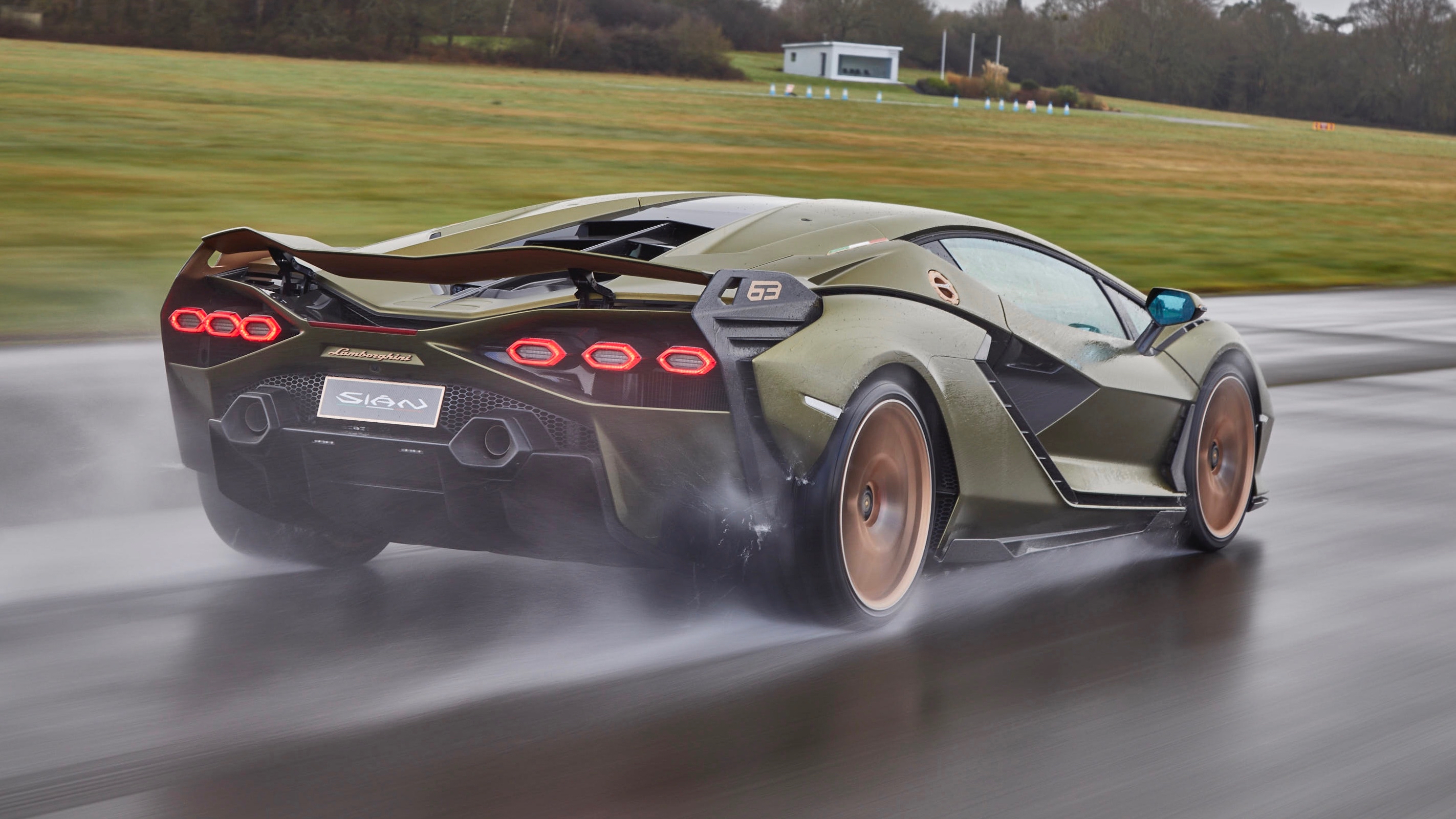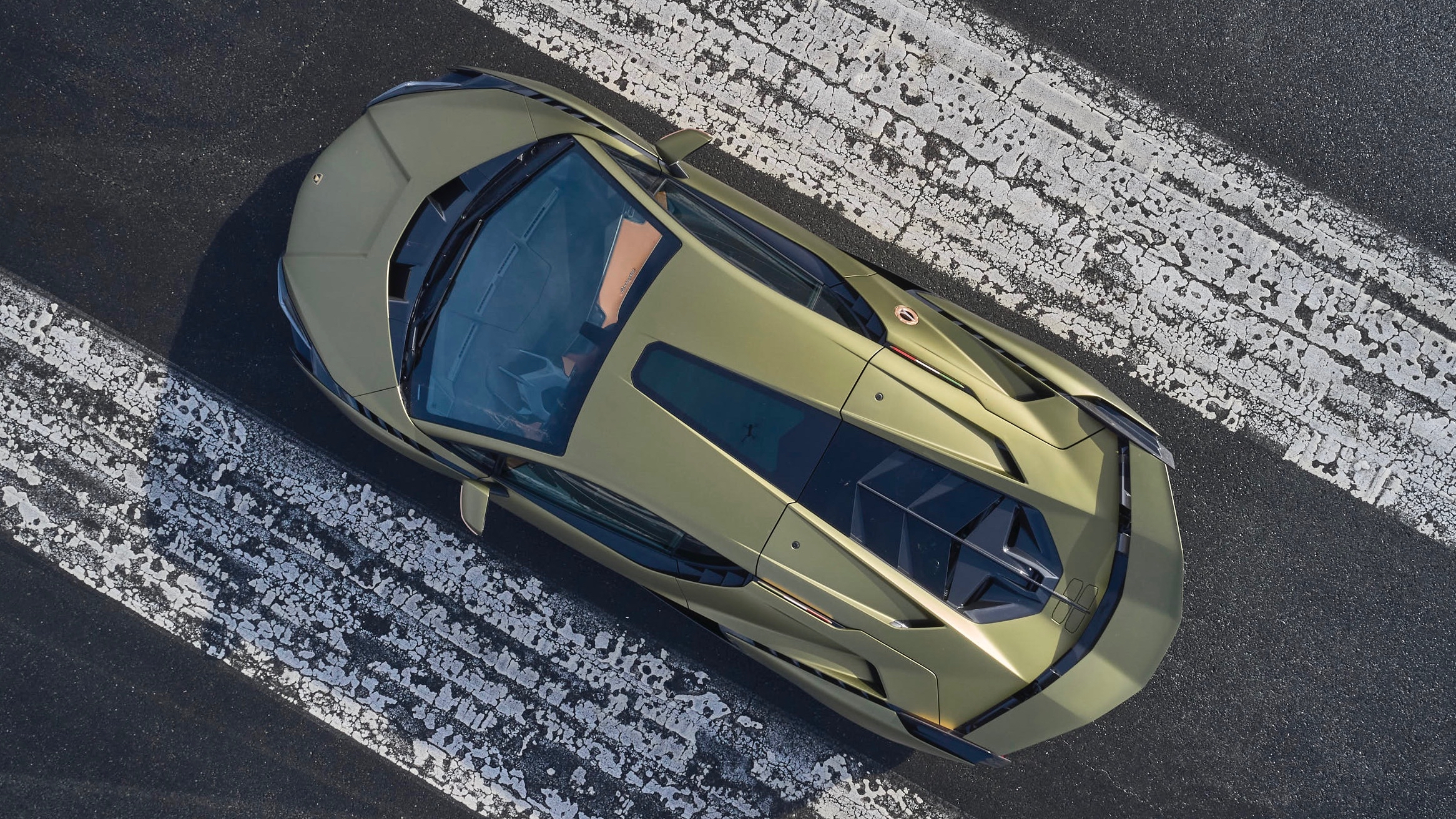
Interior
What is it like on the inside?
Driven an Aventador? You’ll recognise the interior, with much of the switchgear and broad-brushstroke architecture carried over, albeit with a rejigged centre console and everything wrapped and finished in the most expensive materials and processes possible. Chunky cross-stitching along the dash, hectares of cognac leather, no surface un-carboned. The screen has flipped to portrait (like the Huracán Evo) and the chairs themselves envelope you in a buttery leather embrace.
You sit low, deep within the bowels of the car and clutch a high-set wheel in front of you. It might be based around an Aventador architecture that’s been around for 10 years now, but the interior doesn’t feel long in the tooth, the graphics on the virtual instrument display behind the wheel and central screen (which includes a supercapacitor status display to monitor state of charge, recharge and boost) are all crisp and responsive, the switchgear operates with a satisfying click, the scissor doors shut with a reassuring clunk. The big clue that you’re sitting in something beyond the ordinary is a ‘Supercap’ badge on the bulkhead behind the seats, occasionally a very faint whine from the motor and a constant sense that you’re piloting something very large, very powerful, and very expensive.
The stress here isn’t driveability - it’s as easy to trickle along at a few mph as an auto Golf. No, the problem is width and visibility – fine dead ahead, but for the vertically challenged knowing where the outer edges of your wheels are is pure guess work. View out the back? Like peering through a venetian blind without being spotted by your neighbours. But we wouldn’t want it any other way.
There is a boot – a frunk – big enough to contain a crash helmet, but nothing else. Shame, as this is the kind of hypercar you could actually do distance in, if you wanted. Provided you could tolerate the frequent, lengthy fuel stops.
Featured

Trending this week
- Car Review
BMW 1 Series






